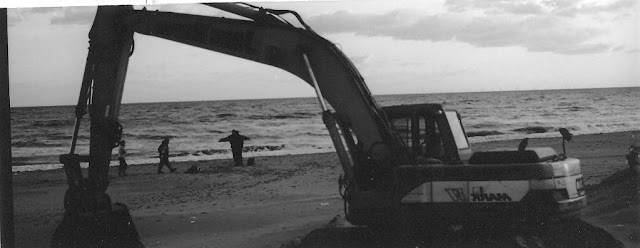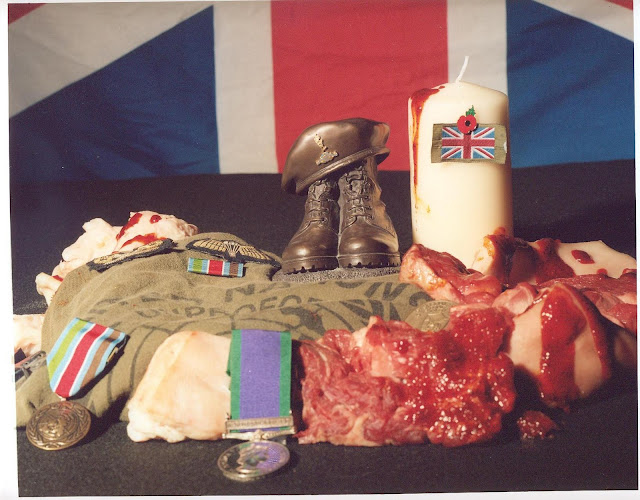The Flatiron Building, or Fuller Building, as it was originally called, is located at 175 Fifth Avenue in the borough of Manhatten, New York City and is considered to be a groundbreaking skyscraper. Upon completion in 1902 it was one of the tallest buildings in the city and the only skyscraper north of 14th Street. The building sits on a triangular block formed by Fifth Avenue, Broadway and East 22nd Street, with 23rd Street grazing the triangle's northern (uptown) peak.
As the French celebrated their Eiffel Tower, so did the Americans regard the Flatiron Building as the icon of the city being modernized and to be celebrated resulting in many different photographs of the building.
Edward Steichen, 'The Flatrion, New York', 1905.
When looking at this image, it makes you feel as if you're peering through the branches or have just looked up and discovered this huge building. This idea of discovery links to the concept of the people discovering that they could build much greater buildings/skyscrapers.
'The Flatrion' picture was taken left of the building and is central to the rest of the image. It has a large depth of field meaning they used a small aperture. The sky background of this image feels as if it could have been taken in the early morning or early evening, where it was possibly foggy or raining.
The image has a sepia effect which could be down to the film or print choice, or maybe this could have been taken at maybe sunset to give this warm, orange-like glow effect of light.
Alfred Stiegitz, 'The Flatiron', 1903.
The building fits half of the frame in the photo and looks as if it was taken on a cold, maybe frosty day.
I think the tree and bushes are included in this photo to give the image character and to scale just how big the building actually is.
I'd say the film used, had a high ISO as the photo looks a bit grainy and a low aperture as the image doesn't have a lot of focus apart from the tree in the foreground which looks quite close to the camera.
This image also doesn't have a lot of tonal range.
I think the photographer intended to show that the new building is fitting or has fitted into the city landscape, due to it blending into the bushes.
Alvin Langdon Coburn, 'The Flatiron Building', 1911.
This image has been taken with the building slightly on the left of the photograph. The building looks a sort ot triangular shape at the top, similar to Edward Steichen's work.
I think this photographer captured the people to show just how busy the streets get and how many people see and may use the building. By having people in this image, it gives a scale as to just how tall this building really is.
The tonal range and sepia effect to this image is also very similar to Edward Steichen's work, even with the composition of the branches and trees.
Walter Gropius, 'The Flatiron Building, New York', 1928.
The most obvious thing about this photo is that the building looks as if it is leaning. This may be due to the photographer not changing the perspective control on the camera.
The building has a fair bit of detail which could be the result of using a high aperture and a film with a low ISO.
This image is mainly mid-tones and looks quite grey.
Walker Evans, 'Flatiron Building seen from below, New York City', 1928-1929.
This image has a variety of tones, but they seems to be in different blocks. For instance, the block of black in the foreground against the light grey-white sky shows a lot of contrast, whilst the building in the center of the image has mainly mid-tones of grey.
The way in which we look up at the building gives the emphasis that the building is really great.
The image seems very structured with everything in its place and it almost looks as if the photographer and us viewers are looking up at the building, out of some sort of hole, in the way that the different elements within the image frame the building.
The way in which we can only see a part of the building, which has a block of black in the foreground is similar to the work of Alfred Stieglitz.
Berenice Abbott, 'The Flatiron Building', 1938.
This photo looks very structured with the straight lines of the buildings. With this, and the way in which we look up at the building taking note of the detail, is similar to the work of Walker Evans.
The way in which the building is the main focus point, taking up most of the frame with a lot of sky as the background is similar to the work of Walter Gropius. - Also by the distance from the building at what this image was taken at.
This image only has detail at the front of the building whereas further back on the building towards the background, becomes out of focus. - Meaning that the image has a large depth of field.














































